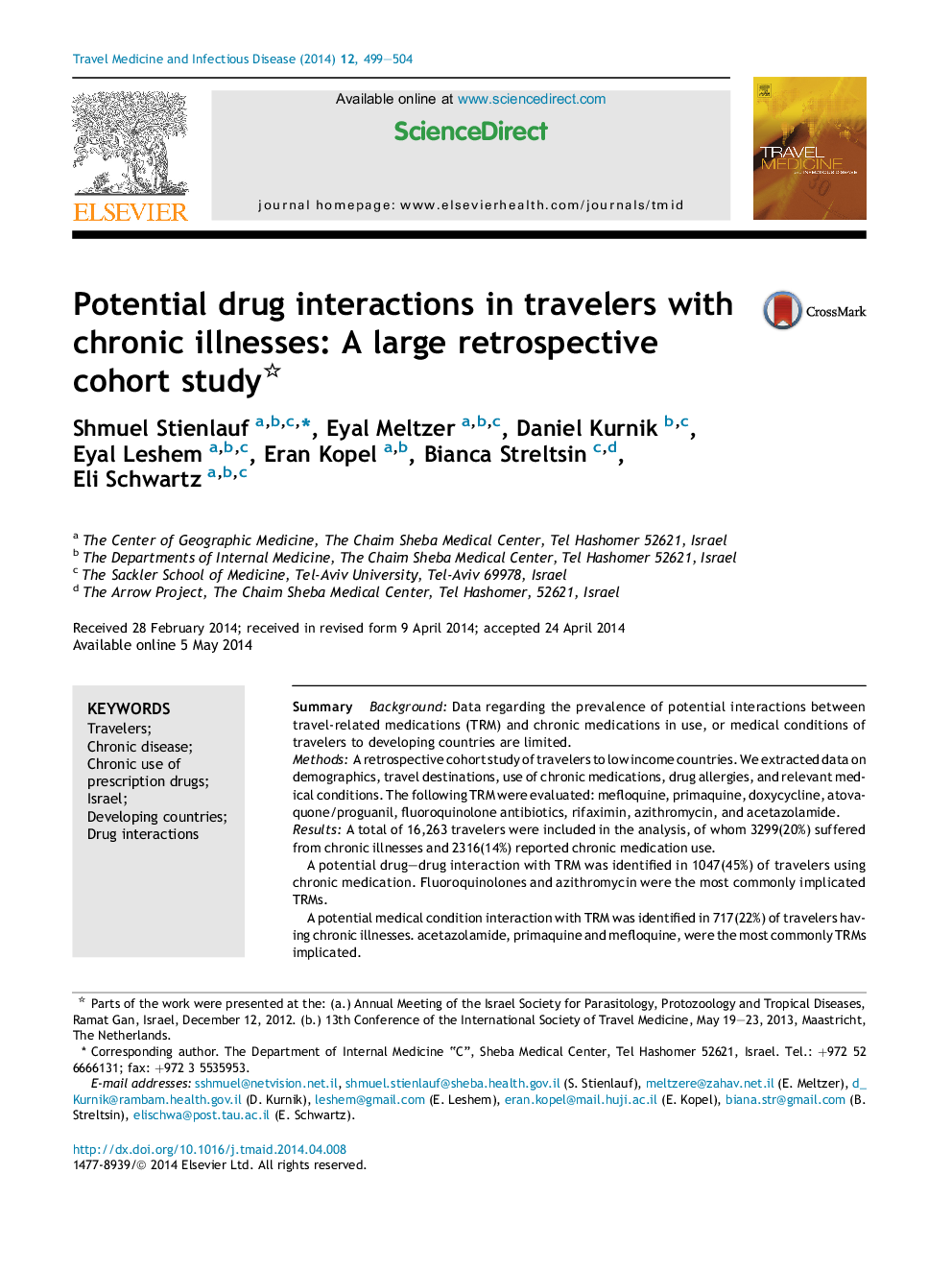| Article ID | Journal | Published Year | Pages | File Type |
|---|---|---|---|---|
| 3392965 | Travel Medicine and Infectious Disease | 2014 | 6 Pages |
SummaryBackgroundData regarding the prevalence of potential interactions between travel-related medications (TRM) and chronic medications in use, or medical conditions of travelers to developing countries are limited.MethodsA retrospective cohort study of travelers to low income countries. We extracted data on demographics, travel destinations, use of chronic medications, drug allergies, and relevant medical conditions. The following TRM were evaluated: mefloquine, primaquine, doxycycline, atovaquone/proguanil, fluoroquinolone antibiotics, rifaximin, azithromycin, and acetazolamide.ResultsA total of 16,263 travelers were included in the analysis, of whom 3299(20%) suffered from chronic illnesses and 2316(14%) reported chronic medication use.A potential drug–drug interaction with TRM was identified in 1047(45%) of travelers using chronic medication. Fluoroquinolones and azithromycin were the most commonly implicated TRMs.A potential medical condition interaction with TRM was identified in 717(22%) of travelers having chronic illnesses. acetazolamide, primaquine and mefloquine, were the most commonly TRMs implicated.Drug allergies, which can pose a relative contraindication for use of acetazolamide, were reported by 1323(8.1%) of all travelers.ConclusionsPotential drug–drug and drug-disease interactions involving TRM might occur in a significant proportion of travelers with chronic medical conditions. Education of health practitioners regarding such potential drug interactions and caution when in prescribing travel-related medications is warranted.
